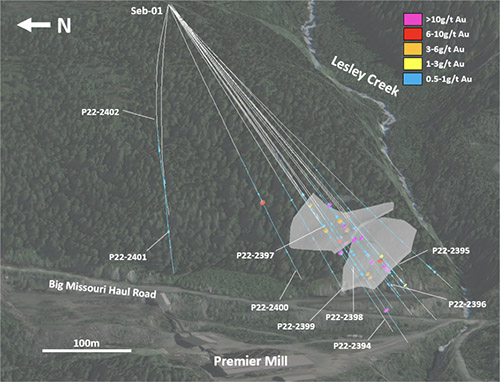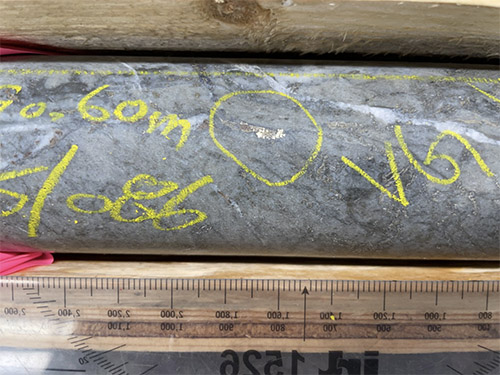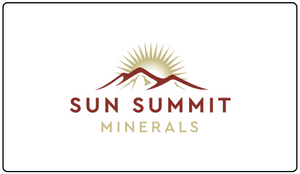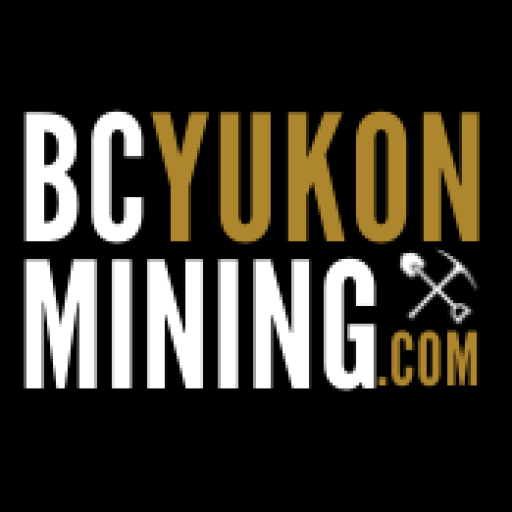Vancouver, B.C. August 22, 2022 — Ascot Resources Ltd. (TSX: AOT; OTCQX: AOTVF) (“Ascot” or the “Company”) is pleased to announce the second batch of assay results from the 2022 exploration drill program at the Company’s Premier Gold Project (“PGP” or the “project”), located on Nisga’a Nation Treaty Lands in the prolific Golden Triangle of northwestern British Columbia. These results are from surface exploration drilling at the emerging Sebakwe Zone, approximately 600 metres east of the past-producing Premier mill.
Highlights from the drill results include:
- 11.83 g/t Au and 56.3 g/t Ag over 2.73m, including 20.10 g/t Au and 82.4 g/t Ag over 1.40m, from a depth of 335.47m in hole P22-2394
- 6.33 g/t Au and 6.6 g/t Ag over 3.20m, including 11.25 g/t Au and 10.7 g/t Ag over 1.60m, from a depth of 290.10m in hole P22-2396
- 8.25 g/t Au and 15.7 g/t Ag over 1.45m from a depth of 290.55m in hole P22-2400
The Company had initially planned on drilling 10 new holes totaling approximately 4,000 metres at Sebakwe as a part of the 2022 exploration drilling program, but based on encouraging visual indications of mineralization and structure, this was increased to 15 holes totaling 6,110 metres. Following the first batch of six drill holes released previously (see News Release dates July 14, 2022) which included bonanza-grade gold of 193 g/t, this release summarizes results from the remaining nine surface drill holes totaling 3,633 metres.
Derek White, President and CEO of Ascot commented, “Following on our previous drilling success at Sebakwe, we have now increased the mineralized strike length fivefold from 70 metres to 350 metres, with mineralization still open in several directions. In just 15 holes drilled this season, we have achieved our main objectives in establishing the high-grade tenor, identifying more coarse, visible gold, and growing the mineralized zone with step-out drilling. We look forward to the future of the Sebakwe Zone and continuing to demonstrate it as an accretive, near-mine exploration success and potential to grow our resource base for development near planned underground infrastructure.
We have advanced underground development at Big Missouri over 450 metres to date and have reached initial mineralized areas, allowing for detailed face sampling. Drilling is ongoing at Big Missouri and we have been encouraged by multiple occurrences of visible gold in the drill core. We will report the corresponding assays as they become available.”
Sebakwe Exploration
An overview of drill hole locations is shown in Figure 1 and assay results are summarized in Table 1. Consistent with previous holes drilled at Sebakwe, each of the nine holes from this batch intercepted the targeted quartz-breccia structures with sulfide mineralization and all have encountered anomalous gold mineralization. Drill results are headlined by hole P22-2394 which intercepted 20.10 g/t Au and 82.4 g/t Ag over 1.40m, within a broader interval of 2.73m grading 11.83 g/t Au and 56.3 g/t Ag, starting from a depth of 335.47m. Drill holes P22-2398 to P22-2402 were drilled along strike towards the northeast. With these new drill results, mineralization has been extended along strike from 70 metres to 350 metres.
Initial modeling work based on the Sebakwe Zone drill results has identified at least two zones of gold mineralization, as shown in Figure 1. These zones have been modeled with a north westerly dip and are located under the Lesley Creek to the east of the Premier mill. These veins are concentrated in the more densely drilled area towards the southwestern end of Sebakwe along a strike length of approximately 120 metres and a down dip extent of 100 metres. The presence of similar vein zones in the northeastern end of Sebakwe is observed, but must be followed up with more drilling to confirm dimensions, continuity, and grade.
Figure 1 – East-looking image of the current drill pattern at Sebakwe indicating the drill holes reported in this release. Two preliminary zones of gold mineralization have been modeled with a north westerly dip under Lesley Creek to the east of the Premier mill.

Table 1 – Sebakwe drill results

Note: Drill holes appear to intersect the targeted structures at high angles suggesting that reported intercepts are likely between 70% to 90% of true width
Table 2 – Drill pad location

Big Missouri Exploration
Surface drilling is currently being conducted at the Big Missouri deposit for in-fill and step-out purposes, and assays are anticipated in the coming weeks. Multiple occurrences of visible gold have been identified in the core, boding well for the pending results (see Figure 2). To date 27 holes have been completed for a total of 2,384 metres at Big Missouri.
Development work at the S1 portal is progressing well with over 450 metres of development completed to date, consisting of 85 metres on the main ramp, 223 metres on the A Zone access and 30 metres on the crosscut into mineralization, with the remainder in underground infrastructure. The face in the mineralization crosscut has been slashed on an azimuth targeting a surface drillhole about 25 metres away. Sampling is being done on each round in the A Zone, and a more comprehensive underground development release will be forthcoming when assay results are received.
Figure 2 – Visible gold in core from Big Missouri drill hole P22-2428

Qualified Person
Lawrence Tsang, P.Geo., the Company’s Senior Geologist provides the field management for the PGP exploration program. John Kiernan, P.Eng., Chief Operating Officer of the Company is the Company’s Qualified Person (QP) as defined by National Instrument 43-101 and has reviewed and approved the technical contents of this news release.
Quality Assurance/Quality Control
Analytical work is being carried out by ALS Canada Ltd. (“ALS”). Ascot’s quality-assurance and quality-control program includes the use of analytical blanks to monitor for cross contamination, certified reference material standards to assess analytical accuracy, and duplicate samples to quantify sampling precision. This is in addition to the internal quality assurance program employed by ALS.
Samples are dried and weighed by ALS. They are then crushed to 75% passing 2mm, with 250g split and pulverized to 85% passing 75µm. Samples are processed at the ALS preparation lab in Terrace and sent to ALS in North Vancouver for analysis. There, all samples are dissolved using four acid digestion with an ICP-AES finish and fire assay with AA finish for gold. Samples over 100ppm silver are digested with aqua regia and then volumetrically diluted before an ICP-AES or AA finish (up to 1,500ppm). Samples over 1,500ppm silver are fire assayed with a gravimetric finish. Samples over 10ppm gold are fire assayed with a gravimetric finish. Identified or suspected metallic gold or silver are subjected to “metallics” assays. Sampling and storage is located at the Company’s secure facility in Stewart, British Columbia.
On behalf of the Board of Directors of Ascot Resources Ltd.
“Derek C. White”
President & CEO
For further information contact:
David Stewart, P.Eng.
VP, Corporate Development & Shareholder Communications
dstewart@ascotgold.com
778-725-1060 ext. 1024
About Ascot Resources Ltd.
Ascot is a Canadian junior exploration and development company focused on re-starting the past producing Premier gold mine, located on Nisga’a Nation Treaty Lands, in British Columbia’s prolific Golden Triangle. Ascot shares trade on the TSX under the ticker AOT. Concurrent with progressing the development of Premier, the Company continues to successfully explore its properties for additional high-grade underground resources. Ascot is committed to the safe and responsible development of Premier in collaboration with Nisga’a Nation as outlined in the Benefits Agreement.
For more information about the Company, please refer to the Company’s profile on SEDAR at www.sedar.com or visit the Company’s web site at www.ascotgold.com, or for a virtual tour visit www.vrify.com under Ascot Resources.













